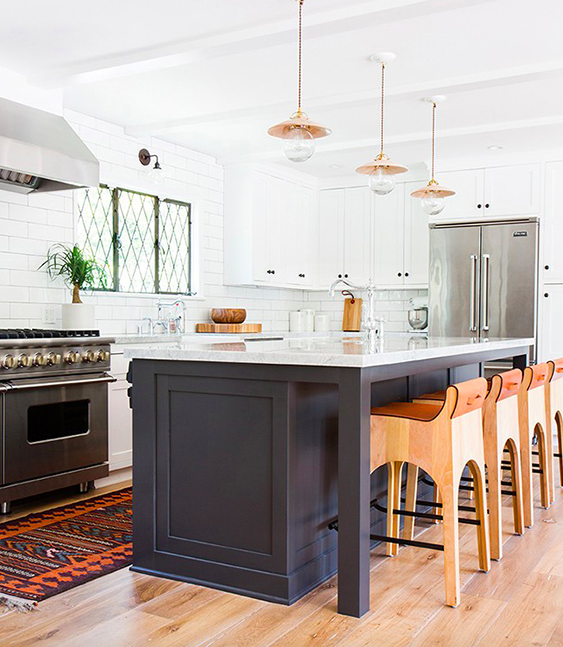The Importance of a Sturdy Kitchen Area Island Leg in Producing a Functional Cooking Area
A strong kitchen area island leg serves as a basic part in establishing a functional cooking setting, offering necessary assistance for both the kitchen counter and various kitchen area tasks. The stability it provides can significantly reduce the threat of mishaps in high-traffic areas, while also adding to the total visual coherence of the space. As cooking areas evolve right into multifunctional locations for food preparation, eating, and socializing, the selection of materials and design considerations for island legs ends up being increasingly crucial. Recognizing these elements can change your kitchen area into a more secure and extra efficient location, triggering more expedition right into the finest options offered.
Benefits of Sturdy Island Legs
Supplying essential support, tough kitchen island legs play a crucial function in improving the performance and sturdiness of cooking area islands - kitchen island leg. These legs not only bear the weight of the counter top and any kind of additional products put on the island, but also contribute to the general security of the framework. A well-supported cooking area island makes sure that it remains practical and upright, even under hefty usage, which is especially important in active kitchen atmospheres
Additionally, sturdy island legs can improve the visual charm of the kitchen. They give a strong structure that can match numerous layout styles, from contemporary to conventional. This versatility permits homeowners to tailor their cooking area islands according to individual preference while guaranteeing that the architectural stability continues to be uncompromised.
Along with their encouraging duty, durable kitchen island legs can additionally improve safety and security. A stable island lowers the danger of accidents brought on by tipping or wobbling, which is particularly crucial in houses with youngsters or senior individuals. Moreover, strong legs can assist in a seamless circulation of tasks, permitting effective meal preparation and social interactions within the cooking area room. Inevitably, purchasing strong cooking area island legs is crucial for a practical and aesthetically pleasing cooking location.
Materials for Cooking Area Island Legs
When selecting products for kitchen island legs, durability and aesthetic allure are vital aspects to take into consideration,. One of the most typical materials consist of hardwood, steel, and crafted timber, each offering distinct benefits.
Wood, such as cherry, maple, or oak, is a traditional option as a result of its stamina and classic elegance (kitchen island leg). It can hold up against substantial weight and is immune to use, making it optimal for high-use cooking area atmospheres. Additionally, wood can be tarnished or repainted to match different kitchen designs
Metal legs, often crafted from stainless-steel or wrought iron, supply a contemporary and industrial appearance. They are incredibly solid and can sustain substantial tons while being immune to dampness and heat, which is helpful in a cooking location. Steel legs can additionally be easily cleaned up, improving their practicality.

Layout Considerations for Security
The selection of products for kitchen area island legs directly affects the style considerations for stability. When making a kitchen island, it is paramount to evaluate the weight-bearing capacity of the chosen products. Heavier products, such as strong wood or steel, usually offer greater security, specifically under the anxiety of everyday use.
Furthermore, the leg layout need to incorporate proper geometry to boost security. A bigger base increases the support area, minimizing the danger of tipping or wobbling. Consideration must additionally be given to why not find out more the elevation of the legs; disproportionate leg lengths can cause inequality, compromising the overall security of the island.
Additionally, the distribution of weight throughout the island is essential. Ensuring that the leg positioning aligns with the heaviest components, such as home appliances and countertops, will additionally enhance stability.
Upkeep Tips for Durability

Cleaning is another important element of upkeep. Depending on the product of the legs-- whether timber, metal, or composite-- suitable cleansing approaches need to be used. For wood legs, a mild clean with an ideal timber and a moist towel cleaner will aid protect my latest blog post their surface. Metal legs might call for a light polish to protect against rust and preserve their gloss.
If the cooking area island experiences hefty use, consider strengthening the legs with extra braces or supports to boost sturdiness. By complying with these maintenance suggestions, home owners can ensure their kitchen island legs stay functional and durable for years to come.
Selecting the Right Leg Design
Regular maintenance guarantees that kitchen island legs remain sturdy and practical, yet selecting the right leg style is just as important for both aesthetics and support. The option of leg style can dramatically influence the total design and consistency of your kitchen area.

Functionality is another important aspect. For example, thicker legs or those with a durable base can support heavier kitchen counters and tools, boosting the island's energy. Conversely, slim legs might produce a ventilated look, ideal for lighter styles however possibly less encouraging.
Final Thought
In summary, the relevance of sturdy kitchen island legs can not be overstated in the development of a functional cooking area. These legs offer crucial assistance, enhance stability, and add to the total visual of the kitchen area.
A tough cooking area island leg serves as a fundamental part in developing a functional food preparation atmosphere, giving required support for both the counter top and different cooking area activities.Providing essential assistance, tough cooking area island legs play a crucial function in improving the performance and toughness of kitchen islands. Eventually, investing in durable kitchen area island legs is necessary for a useful and visually pleasing cooking location.
Consideration read the article should likewise be offered to the elevation of the legs; out of proportion leg sizes can lead to inequality, jeopardizing the overall security of the island.
Wooden legs supply warmth and a timeless appearance, while steel legs provide a modern-day and commercial feeling.